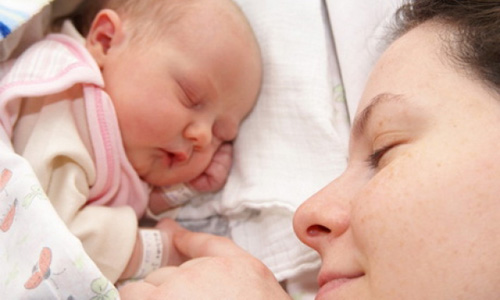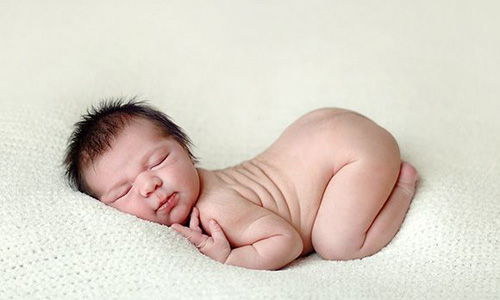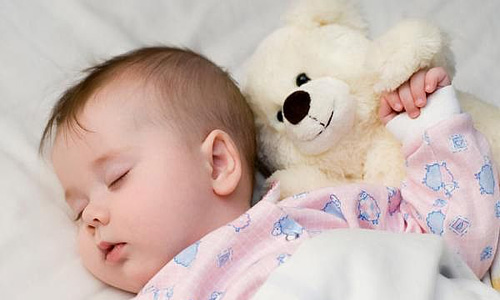Your baby has just come into the world and has yellow eyes? It could be jaundice, a condition that means a quantity of bilirubin in the blood. In this article, you can find about the symptoms and treatment of jaundice in newborns.
What is jaundice?
Jaundice is a condition characterized by yellowing of the skin and the white part of the eyeball. Jaundice is a result of an accumulation of large amounts of bilirubin in the blood. You need to know that bilirubin is produced by destruction of red blood cells and hemoglobin, the protein found in red blood cells and which role is to carry oxygen from lungs to tissues in the body.
Jaundice in newborns usually occurs after about one day after birth. If healthy infants fed with breast milk, there is a degree of yellow coloration of skin about three to four days after birth. Jaundice disappears or decreases in intensity by itself without treatment and without trace within a week, maximum two.
It is important to know that as long as the baby gets enough milk and is fed often, eight to ten or more times within a day, jaundice is not a problem.
What causes jaundice in newborns?
Jaundice is the evidence that blood contains an excess of bilirubin. Bilirubin exists in the blood of every man, but in newborns, bilirubin level is often increased because babies have at birth a number of additional red blood cells. Subsequently, bilirubin is processed and eliminated by the liver. And, as in newborns, the liver is not working at full capacity, when this type of jaundice occurs.
What are the symptoms of jaundice in newborns?
The most common manifestation of newborn jaundice is yellowing of the skin. Usually, the yellow color first appear on the face and chest, in the first four days after birth, although on appearance varies from a newborn to another depending on the type of jaundice.
Physiologic jaundice occurs in all children, although in some is of low intensity and is going unnoticed, with the onset after the first day of life, because child organs are not yet able to effectively eliminate excess bilirubin. Jaundice intensity increases after the first day after birth until the fourth day of life.
If jaundice occurs during breastfeeding your baby, you know that jaundice can be caused by mild dehydration, which prolongs and intensifies physiologic jaundice. Dehydration contributes to jaundice because is more difficult to eliminate bilirubin from the body systems with specific functions, systems otherwise immature in newborn. This usually happens when the meals are at too-large intervals. Therefore, often feeding during the day decrease or cure physiological jaundice type in the first week of life.
If you notice that this coloration continues to grow in intensity after the third day of life, or if it not disappear after the fifth day of life, you must consult a doctor specialist.
How to treat jaundice in newborns?
Certainly, you wonder if your baby can recover as soon as possible with special treatment. In most cases of jaundice in babies, no treatment is needed, but it is necessary to pay attention to your baby and observe any changes in skin tone appearance or behavior. If the baby has a dangerously high level of bilirubin in the blood, it needs treatment, but only after a specialist recommended it.
Note that for whatever reason, high levels of bilirubin that remain untreated can lead to brain damage, this is kernicterus. High levels of bilirubin results in your baby’s hearing loss and mental retardation behavior disorders.
What is recommended in this case? Doctors recommend phototherapy, the most common method of therapy. This therapy uses fluorescent light that is designed to enhance the transformation of bilirubin into a form that the body can eliminate at a faster rate.
Standard phototherapy is usually applied in hospital units, but if children do not suffer from other diseases, there is a home treatment method that uses a device consisting of optical fiber in the form of beds. The role of these beds is to return to normal bilirubin levels, but are used only for treatment of mild jaundice.
Regarding fluorescent light used during phototherapy, it is not harmful as long as it is used prudently and your baby’s eyes will be protected. Infants are accustomed to darkness after months spent in the womb, so these devices should not bother your baby. If your baby follows home therapy, it is very important for parents to understand the operation of this device.
During treatment, the amount of bilirubin in the blood of newborn should be monitored daily.
Do not forget that the infant should be examined by the doctor in the first four to five days after birth. When is the period in which the child can become icteric, but will not require phototherapy. Parents need to watch the infant carefully, to see jaundice or intensity of behavioral change.
Here are the steps you need to follow to observe the evolution of jaundice in baby: parents need to fully undress the child and to carefully observe the skin twice a day and for children of black race is recommended observing modifications in the white areas, also, parents need to keep in mind that the child’s skin cools quickly, and it should be wrapped in a blanket quickly, parents need to examine the child at the same time every day, in the same room and in the same light conditions and notify the physician when an intensity of jaundice is observed.



